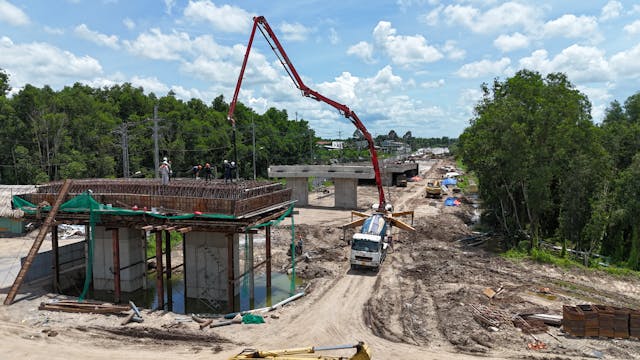
For CIOs of medium-sized manufacturing companies, integrating real-time location systems (RTLS) with existing infrastructure can be daunting. The challenges of marrying new technologies with legacy systems require careful planning and execution. However, with over 15 years of experience in Location Intelligence solutions, my goal is to guide you through the best practices for lone worker tracking while ensuring maximum return on investment (ROI). Embracing these practices will not only safeguard your employees but also position your company as a leader in workplace safety innovation.
Understanding Lone Worker Safety
Lone workers are individuals who work by themselves without direct supervision. This could include maintenance personnel, field technicians, and even delivery drivers. Often operating in remote or potentially hazardous environments, these workers face unique safety challenges. The inherent risks associated with such roles make lone worker safety a top priority for organizations aiming to protect their workforce and maintain high safety standards.
Importance of Employee Monitoring Tools
Employee monitoring tools play a crucial role in lone worker safety. These tools help in tracking the location and well-being of employees in real-time. By leveraging GPS technology and other location-based services, companies can ensure that lone workers are safe and accounted for at all times. Furthermore, these tools allow for the monitoring of environmental conditions, enabling proactive measures to be taken in response to potential hazards. Real-time data can significantly reduce response times in emergencies, potentially saving lives and minimizing injuries.
Integrating Real-Time Location Systems (RTLS)
Real-Time Location Systems (RTLS) are essential for effective lone worker tracking. RTLS solutions provide precise location data, enabling companies to monitor worker movements and respond swiftly in case of emergencies. The deployment of RTLS involves using a combination of GPS, Wi-Fi, RFID, or Bluetooth technologies to provide accurate location tracking. When integrated seamlessly with existing infrastructure, RTLS can significantly enhance safety protocols. This integration can also lead to streamlined operations and better resource management, as companies gain insights into workforce deployment and workflow efficiencies.
Best Practices for Implementing Lone Worker Tracking Systems
Implementing a successful lone worker tracking system requires a strategic approach. Here are some best practices to consider:
Conduct a Comprehensive Risk Assessment
Begin by conducting a thorough risk assessment of your work environment. Identify potential hazards and evaluate the specific needs of your lone workers. This assessment will guide you in selecting the most suitable tracking solutions and safety protocols. Consider factors such as the nature of the work, environmental conditions, and the specific risks associated with each role. Engaging with workers to understand their concerns and experiences can provide valuable insights into the risks they face and how best to address them.
Choose the Right Technology
The choice of technology is paramount when it comes to lone worker tracking. Opt for solutions that provide real-time alerts, two-way communication, and reliable connectivity. Ensure that the technology is scalable and can be integrated with your existing systems without major disruptions. Look for systems that offer flexibility and can evolve with your company’s needs, accommodating future technological advancements. Partnering with experienced vendors can facilitate the selection of the most appropriate technology tailored to your specific requirements.
Implement Robust Communication Channels
Effective communication is key to ensuring lone worker safety. Implement communication tools that allow workers to quickly reach out for help in case of emergencies. Two-way communication devices, such as smartphones or dedicated safety devices, can be invaluable in critical situations. Providing workers with easy-to-use devices ensures they remain connected, even in remote locations. Establishing clear communication protocols and ensuring all workers are familiar with them is essential for ensuring timely responses in emergencies.
Train Workers on Safety Protocols
Training is a vital component of any safety strategy. Ensure that your lone workers are well-versed in safety protocols and know how to use the tracking technology effectively. Regular drills and simulations can help reinforce these protocols and prepare workers for emergency situations. Investing in continuous training programs keeps safety top-of-mind and equips workers with the skills necessary to respond to new challenges. Training also fosters a culture of safety, where workers feel confident and empowered to prioritize their well-being.
Overcoming Technical Challenges
Integrating RTLS with existing infrastructure may pose technical challenges. Here’s how to navigate these complexities:
Ensure Compatibility with Existing Systems
Before implementing any new technology, ensure that it is compatible with your current systems. Conduct thorough testing and work closely with vendors to address any integration issues. This will minimize disruptions and ensure a smooth transition. Compatibility checks should extend beyond technical systems to include processes and workflows to ensure comprehensive integration. Establishing a dedicated project team can streamline the integration process and facilitate effective collaboration between all stakeholders.
Leverage Data Analytics for Continuous Improvement
Harness the power of data analytics to gain insights into worker movements and safety patterns. By analyzing this data, you can identify areas for improvement and optimize your safety protocols. Continuous monitoring and analysis will enable you to adapt to changing conditions and enhance overall safety. Data-driven decision-making can also inform strategic planning and investment in safety technologies, ensuring resources are allocated effectively. Regularly reviewing analytics reports can highlight trends and emerging risks, prompting timely interventions.
Address Privacy Concerns
Employee monitoring tools often raise privacy concerns. It is crucial to address these concerns transparently and ensure that data is handled ethically and in compliance with regulations. Clearly communicate the purpose and scope of monitoring to gain employee trust and cooperation. Implementing strict data protection measures and providing employees with access to their data can help alleviate privacy concerns. Engaging with employees to discuss their rights and the safeguards in place can foster trust and reassure them of the system’s benefits.
Real-World Examples of Successful Implementation
Several industry leaders have successfully implemented lone worker tracking systems. For instance, automotive giant BMW has integrated RTLS to enhance safety in its manufacturing facilities. By providing real-time location data and emergency alerts, BMW ensures that lone workers receive immediate assistance when needed. This integration has not only improved safety outcomes but also optimized workflow management, contributing to greater operational efficiency and reduced downtime.
Similarly, John Deere has leveraged location intelligence to monitor field technicians working in remote areas. The system not only ensures their safety but also optimizes route planning and resource allocation, leading to improved operational efficiency. The implementation of these systems has allowed John Deere to maintain high safety standards while enhancing service delivery and customer satisfaction. These examples illustrate how technology can transform safety management and operational practices, providing a model for other organizations to emulate.
Also Read: Top Alternatives to Belay for Virtual Assistant Services in 2025
Conclusion
Ensuring the safety of lone workers is not just a regulatory requirement but a moral obligation. By implementing best practices for lone worker tracking and leveraging advanced technologies, you can create a safer work environment and enhance operational efficiency. Prioritizing worker safety demonstrates a commitment to employee well-being and can positively impact organizational culture and reputation.
As you embark on this journey, remember that successful implementation requires careful planning, seamless integration, and continuous improvement. With the right approach, you can overcome technical challenges and achieve your digitization goals, ultimately maximizing ROI from your digital transformation endeavor. Investing in lone worker safety not only protects your employees but also strengthens your company’s resilience and competitiveness in an ever-evolving industrial landscape.








